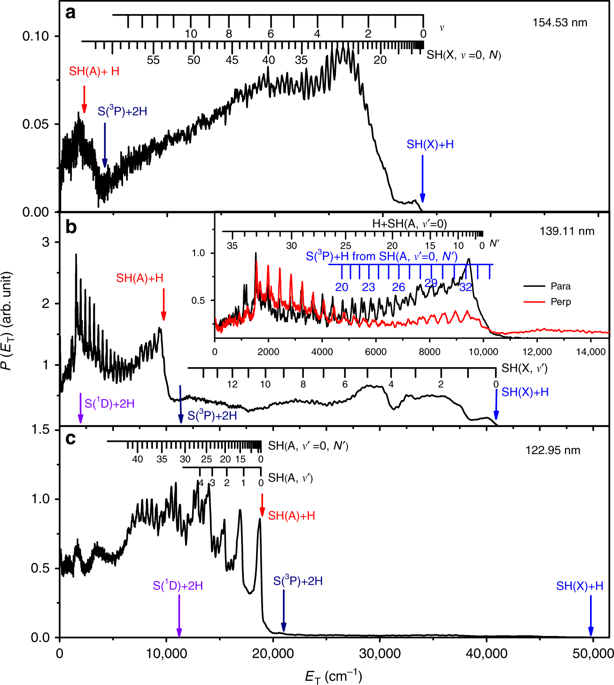Nature Communications ( IF 16.6 ) Pub Date : 2020-03-24 , DOI: 10.1038/s41467-020-15343-4 Jiami Zhou , Yarui Zhao , Christopher S. Hansen , Jiayue Yang , Yao Chang , Yong Yu , Gongkui Cheng , Zhichao Chen , Zhigang He , Shengrui Yu , Hongbin Ding , Weiqing Zhang , Guorong Wu , Dongxu Dai , Colin M. Western , Michael N. R. Ashfold , Kaijun Yuan , Xueming Yang

|
Hydrogen sulfide radicals in the ground state, SH(X), and hydrogen disulfide molecules, H2S, are both detected in the interstellar medium, but the returned SH(X)/H2S abundance ratios imply a depletion of the former relative to that predicted by current models (which assume that photon absorption by H2S at energies below the ionization limit results in H + SH photoproducts). Here we report that translational spectroscopy measurements of the H atoms and S(1D) atoms formed by photolysis of jet-cooled H2S molecules at many wavelengths in the range 122 ≤ λ ≤155 nm offer a rationale for this apparent depletion; the quantum yield for forming SH(X) products, Γ, decreases from unity (at the longest excitation wavelengths) to zero at short wavelengths. Convoluting the wavelength dependences of Γ, the H2S parent absorption and the interstellar radiation field implies that only ~26% of photoexcitation events result in SH(X) products. The findings suggest a need to revise the relevant astrochemical models.
中文翻译:

H 2 S的紫外光解及其对星际介质中SH自由基产生的影响
在星际介质中都检测到了基态的硫化氢自由基SH(X)和二硫化氢分子H 2 S,但是返回的SH(X)/ H 2 S的丰度比意味着前一种相对的耗尽到当前模型所预测的结果(假定在低于电离极限的能量下,H 2 S吸收光子会产生H + SH光产物)。这里,我们报告的H原子和S(那平移光谱测量1通过射流冷却H的光解形成d)原子2在许多波长范围为122≤小号分子 λ ≤155nm为这种明显的耗尽提供了理论依据;形成SH(X)产物Γ的量子产率从单位(在最长激发波长处)降低到在短波长处为零。对Γ的波长依赖性,H 2 S母体吸收和星际辐射场进行卷积,表明只有约26%的光激发事件产生了SH(X)产物。研究结果表明有必要修改相关的地球化学模型。



























 京公网安备 11010802027423号
京公网安备 11010802027423号